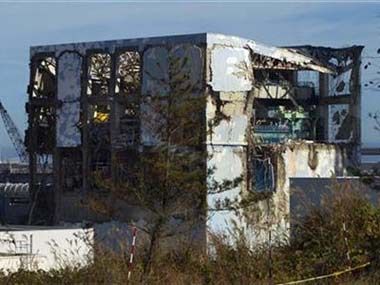
Prime Minister Yoshihiko Noda announced on Friday that cold shutdown meant the accident itself had been contained, though he added that the government faced a long and hard task in cleaning up radiation and dismantling the plant, which may take up to 40 years.
The plant, 240 km northeast of Tokyo, was wrecked by towering tsunami waves, triggered by a 9 magnitude earthquake on 11 March, which knocked out its cooling systems, triggering meltdowns and mass evacuations.
A cold shutdown is when water used to cool nuclear fuel rods stays below boiling point, preventing the fuel from reheating. The declaration of a cold shutdown is a government pre-condition for allowing about 80,000 residents evacuated from a 20-km radius exclusion zone around the plant to go home.
One of the chief aims of the plant's operator, Tokyo Electric Power (Tepco), had been to bring the reactors to that state by the end of the year. But critics have raised concern that Friday's announcement was premature.
"Wouldn't it be reasonable to declare containment had been achieved when radiation leaks have been brought to a complete halt?" asked the Nikkei business daily in an editorial.
It said radioactive water continued to leak from the plant and that reactors No. 3 and 4 had yet to be covered to prevent leaks into the atmosphere.
Other newspapers echoed the scepticism over the crippled plant. "Too soon to announce a containment," read the headline of an editorial in the Asahi newspaper, which said cold shutdown was merely a stage on the way to a resolution.
Guessing
The Nikkei and others also took issue with the government's characterisation of the reactor's status as "cold shutdown", given that there was no way of directly measuring the temperature of the melted fuel inside the reactors.
"It is like guessing the shape of a foot from the outside of the shoe," the Nikkei said.
The Mainichi newspaper agreed, saying efforts should be made to ascertain the condition of the melted fuel. "It's true that the situation is more stable than at the time of the accident," the paper said. "But the term 'cold shutdown' refers to the suspension of a sound reactor."
The government and Tepco will aim to begin removing the undamaged nuclear rods from the plant's spent fuel pools next year. However, retrieval of fuel that melted down in the reactors may not begin for another decade.
The environmental group Greenpeace on Friday dismissed the announcement of a cold shutdown as a publicity stunt. "By triumphantly declaring a cold shutdown, the Japanese authorities are clearly anxious to give the impression that the crisis has come to an end, which is clearly not the case," Greenpeace Japan said in a statement.
But Jonathan Cobb, an expert at the British-based World Nuclear Association, said the authorities had put in additional conditions before "cold shutdown conditions" were reached, including ensuring the release of radioactive material was under control.
"This criteria was also reached some time ago, the government has delayed declaration of cold shutdown conditions, one reason being to ensure the situation at the plant was stable," Cobb said.
In all, about 25,000 people were killed in the 11 March disaster, most by the tsunami waves which devastated communities along the coast.
Source: Reuters



Reader Comments
to our Newsletter